Here’s another installment of Mr. Kevin’s all-time favorite board games. There’s something here for everyone!
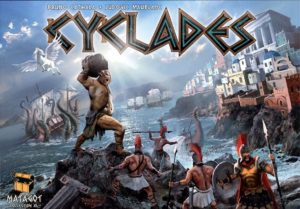 |
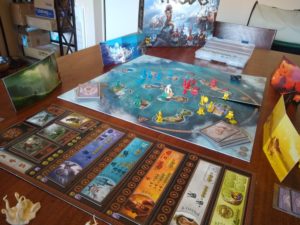 |
15) Cyclades (2009): Matagot has a trilogy of games that have set a high bar for area movement territory control games. Innis is the artsy, experimental one. Kehmet is the gritty, aggressive one. And Cyclades is the epic, adventurous one. Cyclades perfectly embodies the theme that the players are beholden to the whims of the capricious gods, forcing them into vicious auctions that decide who gets to take each action. Needing navies to navigate the islands of the map, attacks require many stages of planning to pull off. The goal of the game is to build two metropolises, and this can be done without a single battle, but decisive aggression not only can speed up your growth, it also sets your opponents behind. Managing your expansion, securing your defenses, and being ready to take advantage of your opponent’s mistakes is already enough to worry about, but adding in the need to gain the favor of the right god at the right time makes this game a legendary one. Toss in the monsters throwing around cool special abilities and the great expansions that keep the game fresh, and you’ve got a game of mythological stature.
 |
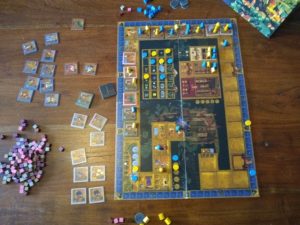 |
14) Caylus (2005): In Caylus you assign workers to spaces on the board to gain cubes, then assign workers to other spaces on the board to turn cubes into points. If you’ve played board games much over the past 15 years, that probably sounds like something you’ve seen in at least a dozen games. All those games were inspired by Caylus, and almost none of them can compete with the original, especially not at the 2 player count, where the game is phenomenal. Players have complete control over which buildings enter the game and in which order. The way the game develops changes the priorities the players have and the strategies they must employ to be successful. The game is fairly long for its genre and has a dry, repetitive quality that some people find off putting, but the way the game slowly rewards your decisions and reveals your impending victory is just so satisfying.
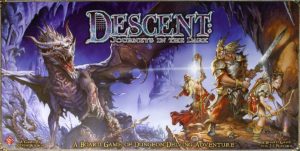 |
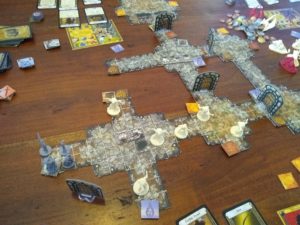 |
13) Descent (2005): For the most part, I like games that are competitive, force players into unstable alliances, have tons of interaction, have little to no luck, give players a singular goal, use straightforward mechanics, and encourage opaque or indirect strategy. Descent does basically none of these things, often embracing the exact opposite design goal on each of these points, but I love it anyway. Descent plays out as an arcade-style dungeon crawl where characters are expected to die, but that’s fine as long as you haven’t run out of quarters conquest tokens. Descent embodies many of the tastes I had in games when I was a kid: flashy, lousy with decks of cards that give special powers and bonuses, loads of plastic miniatures, high stakes dice rolls, and surprises around every turn. While I’ve moved on from this style of game for the most part, I still love playing Descent. It does this style of play better than any other game and connects me to a younger version of myself.
 |
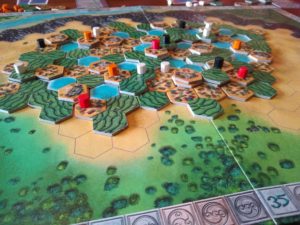 |
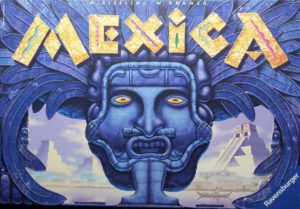 |
 |
12) Java (2000)/Mexica (2002): Usually a game will give you a pretty clear idea of what you should be doing, but Java just gives you an empty board, some tiles, and a few ways to score points. From there the players build a landscape determined completely by their whims and the opportunities they create. On these landscapes the players send their workers, claiming the cities the players built. The building continues, but the purpose changes, with new tiles being laid back and forth to control the growth and ownership of the cities. The tiles get higher as players fight for control of the most valuable cities until the game ends and the players look at the board and wonder about the incredible series of events that led an empty grid into this exact, unique configuration. Mexica, by the same designers as Java, has very different gameplay but captures the same open-ended feel where the pace and landscape are determined solely by the players. Canals and buildings form districts in an Aztec City where players seek to carve out the best locations for themselves by blocking out their opponents. Unlike Java, in Mexica you have to build in specific sizes, giving it a more ordered feel. It’s almost impossible to imagine how the board will unfold when you stare at its emptiness at the start of the game, but it will happen slowly, just a few actions at a time. Both Java and Mexica are works of art that aren’t just played, they are experienced.
 |
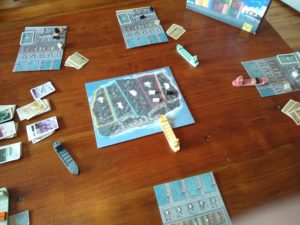 |
11) Container (2007): Trust is a weird quality to say a game has, but Container trusts its players. The economy of the game is completely driven by their actions. They decide what to build, what to warehouse, what to ship, and how much to pay at every step of the way. This is a rare freedom, but it comes at a cost. If the players mess up it is entirely possible for the entire economy to collapse, into a downward spiral some (or even all!) of the players cannot escape. Some people might call this a fatal design flaw, but I consider it strangely empowering. Your decisions in this game matter in a way they don’t in many other games, because they literally keep the game running. And if every player is able to keep their head above water, the free-form financial fight that ensues is one of the most rewarding gameplay experiences around.
Check back with us soon for another installment!
